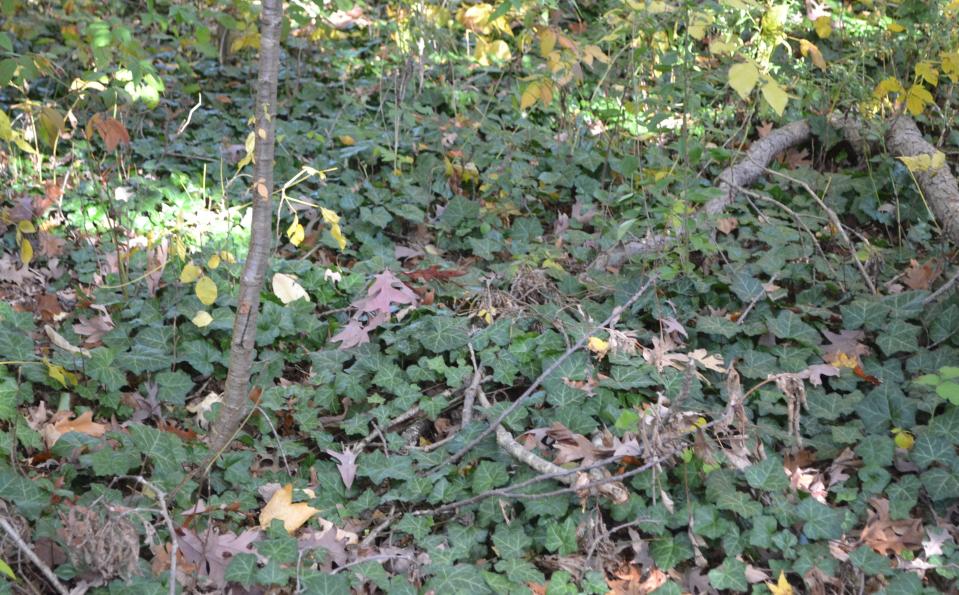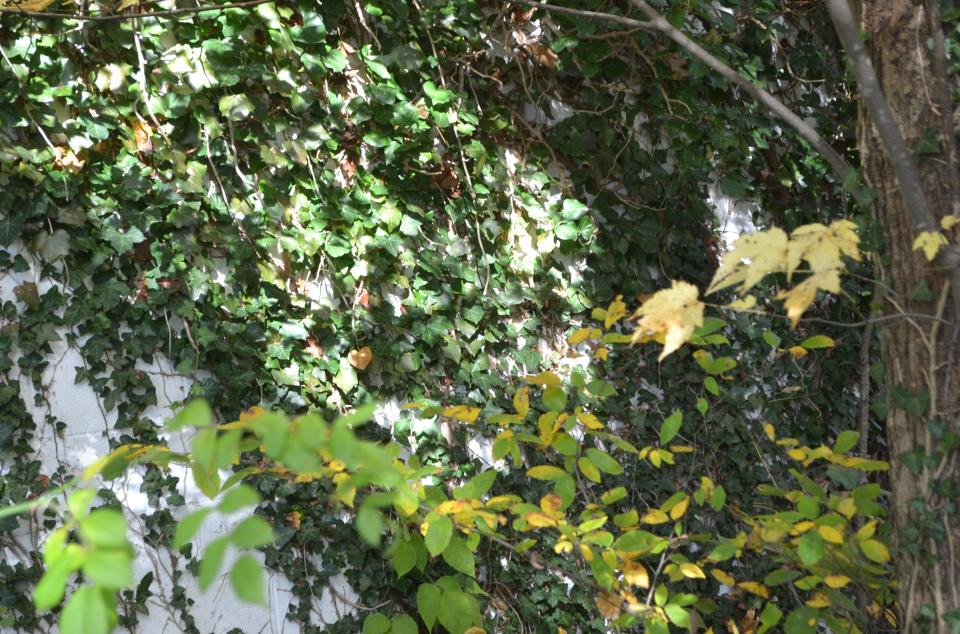A Stroll Through the Garden: Getting rid of English ivy
Just this last week a friend asked me how she could get rid of the English ivy that was taking over her garden. Over the years, I have had a love-hate relationship with this plant. When I was a landscape designer in North Ridgeville, I had a client from Bay Village call and ask how to get rid of about 600 square feet of English ivy or Hedera helix. Bill, my boss, kind of chuckled at him. This plant was growing as densely in this small shade garden as a plant could get. It wasn’t at all going to be simple.
Bill said that we would have to spray some of that commercially-available Roundup — currently contractor-strength Poison Ivy Plus Tough Brush Killer — at least three different times to finish it. We would also need to look forward to some serious weeding each time we sprayed the Roundup.
Nowadays, I don’t like using Roundup at all. There are some serious suits that have been won by plaintiffs against Bayer/Monsanto.

While I was taking my landscape classes at the Ohio State University-Agricultural Technical Institute, I took my Woody Plants class from Professor Larry Steward, and he had a fascinating story about English ivy. Professor Steward used to work as the chief caretaker at the University of Virginia. One of his greatest challenges was battling English ivy that had begun to attack the historic brick and mortar buildings on the campus.
This shade-loving vine with its tendrils, which function as holdfasts and roots at the appropriate time, caused serious damage to these buildings. The tendrils on the vines had worked their way into the mortar, forcing the mortar out of the joint. As Professor Steward related the story, this ivy had worked its way so well through the mortar that there were vines inside various buildings. Damage was widespread on campus and required extensive repairs. All of us should keep these sorts of issues in mind as we plant aggressive plants such as English ivy.

3 steps for English ivy removal
Here are three steps that you can use to remove English ivy from your yard.
The first week, cut all the vines at the base of the trees. Walk around the tree, cutting through every vine growing up the tree at about ankle height using shears. Sever all the vines on the trees completely. Don’t remove the bark.
The second week, cut the ivy on the tree about shoulder height. Pull this section off as best as possible without removing the bark. I would just put the cuttings into a plastic bag to get rid of them. At the same time, cut a circle 6 feet around the tree as you cut through each vine. This is the life-saver cut, because of the circle, and you should see the new tendrils coming up. Pull out the tendrils and remove all the roots. Allow to rest to see the tendrils as they come back and remove.
The third week, make 5-by-5-foot squares wherever you have ivy growing and remove all of the ivy from the ground. Ivy has a wax surface that is hard to break through. In the spring the ivy shoots do not have the waxy coat, which can make it easier to kill. If you mix water, soap and vinegar, you can make a compound that should break down the wax on the leaf and reduce the strength of the leaf. We need to make allowance for elevation changes.

English ivy leaves change, according to horticulturist Michael Dirr. As the ivy climbs trees above 20 feet, it changes from a three to five-point or lobed, alternate, simple, evergreen leaf that is 1.5 inches to 4 inches long, Juvenile matures into the adult leaf with one point or lobe and the ivy also blooms as it gets taller. It is important to keep in mind that the plant is very toxic, and you need to keep little kids away from the berries. The longest vine on any tree has been recorded at 90 feet.
Be extra careful when removing the vine from a tree. The ivy tendrils will cling so well to the bark of the tree that as you remove a live vine, you will also potentially remove the bark of the tree. What I have been reading is that if you cut sections of the vine at the base of the tree and remove the sections and let the vines die naturally, then you should have an easier time getting the vine off the tree.
English ivy can result in the loss of a tree
English ivy competes well against any sort of tree, which means that there is the potential that if you had a healthy tree with this ivy clinging to it you may lose the tree as time would pass. Triclopyr or Vine-X has been reported to kill this plant if you apply it with a paint brush. One other thing to know is that this poison breaks down quickly. I killed this ivy years ago this time of year, so you can use these products seeing that more of the sap is flowing to the roots for storage. Spring will be a greater challenge as sap is flowing from the roots, but the leaves have less wax. The aggressiveness of this plant warrants this kind of action.
Please e-mail me at ericlarson546@yahoo.com if you have any questions about gardening. Additional information will also be located at ohiohealthyfoodcooperative.org. I’ll do the best I can to help as you send me questions and participate in our column.
Eric Larson of Jeromesville is a veteran landscaper and gardening enthusiast and a founding board member of the Ohio Chapter of Association of Professional Landscape Designers.
This article originally appeared on Mansfield News Journal: English ivy and how to get rid of it

